Promising NMESIS missile system for the USMC
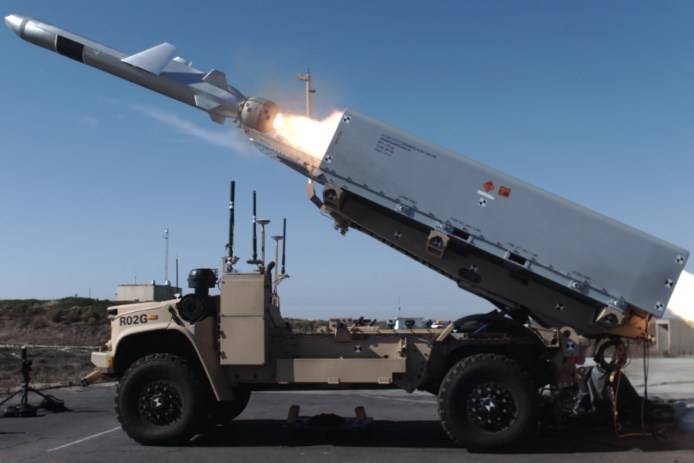
Recently, several American and foreign organizations have been developing a promising NMESIS coastal missile system. This product is intended for the Marine Corps and in the future will have to protect the maritime borders of the United States and allies from possible attack. The project has already been brought to testing, and in addition, approximate plans for the future have been determined.
Anti-ship potential
In the recent past, the Pentagon launched the GBASM (Ground-Based Anti-Ship Missile) theme, the purpose of which was to create a new coastal missile system for the ILC. It was planned to create a light and inexpensive combat vehicle capable of carrying anti-ship missiles of one of the existing or developing models. The first reports of this kind date back to mid-2019.
In May 2020, it became known that the development of the GBASM theme will continue as part of a new project proposed by several companies led by Raytheon Missiles & Defense. Their development of a new type received the designation NMESIS - Navy / Marine Expeditionary Ship Interdiction System.
The first test events with mock-ups of equipment took place at the end of 2019.A new stage of inspections was planned for the middle of 2020, but due to various circumstances it shifted. As it became known this year, the first full-fledged launch of a standard rocket from the NMESIS complex took place last November. Later, new launches were carried out, but the details of such events were not announced.
The project as a whole has progressed quite far, although the main details and deadlines have not been published. At the same time, plans for the future deployment of coastal complexes became known in the spring. It follows from them that the mass production of NMESIS should begin in the middle of the decade and by 2030 ensure the supply of a large number of new equipment.
Based on prefabricated components
The general appearance of the future NMESIS was revealed only a few months ago - a photograph of the combat vehicle at the time of launch was published. The coastal complex in the proposed form consists of several fixed assets. It includes a self-propelled unmanned launcher, an NSM-type anti-ship missile, a ground control post and various support equipment. It is noteworthy that the bulk of such products already exist, and we are only talking about combining them into one complex. Thus, the authors of the project do not have to develop all complex products from scratch, which speeds up the work.
The NMESIS combat vehicle is based on the JLTV ROGUE (Remotely Operated Ground Unit) from Oshkosh. It is a chassis of a serial JLTV armored car, devoid of an armored hull with a habitable compartment and equipped with remote control facilities.
The chassis retains the same bonnet, which houses video cameras and lidars for remote driving and autonomous operation. ROGUE also receives the necessary computing and control systems. Due to the abandonment of the armored hull, a large cargo area was created. In the NMESIS project, it is used to mount a lifting launcher. Shooting is carried out forward without turning horizontally.
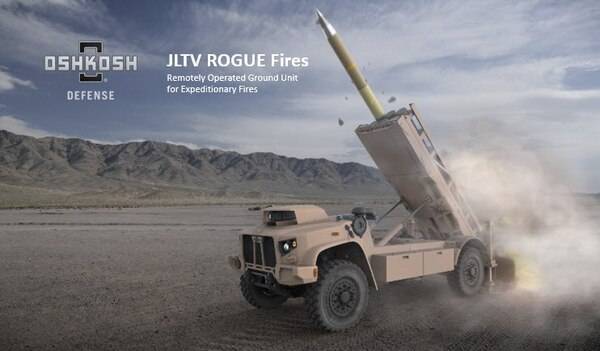
According to various sources, the restructuring of the JLTV armored car into a remotely controlled ROGUE vehicle does not adversely affect the main technical characteristics. The chassis and full-fledged NMESIS launcher maintain mobility and maneuverability at the level of the original armored car.
Weapon complex NMESIS is the anti-ship missile Naval Strike Missile (NSM) of the Norwegian company Kongsberg Defense & Aerospace. It is a cruise missile with a length of approx. 4 m weighing 410 kg, equipped with a starting solid-fuel engine and a cruise turbojet. NSM is equipped with a combined guidance system with inertial, satellite and infrared instruments. The target is defeated by a 125-kg warhead. The flight to the target is carried out at high subsonic speed at a minimum height above the water. The range, depending on the flight profile, reaches 185 km.
The NSM missile is delivered in a rectangular-section transport and launch container. Due to load capacity restrictions, the JLTV ROGUE chassis is capable of carrying two TPKs with missiles. At the same time, installations of a different configuration with a large number of missiles have been developed and are in service.
The appearance of the control center has not yet been revealed. Probably, a van with the necessary equipment is mounted on one of the serial chassis. Such a product will make it possible to control the operation of the missile system at significant distances, depending on the type of communication equipment used.
Project Perspectives
Coastal missile systems NMESIS are planned to be used as a relatively simple and massive means of protecting the coast and nearby water areas. Through the use of ready-made components and new solutions, it is expected to obtain an advantageous ratio of tactical and technical characteristics and ample opportunities.
The customer and the contractor of the project believe that a remotely controlled combat vehicle will have great advantages over traditional technology. Such an installation will be able to autonomously march, deploy to a firing position, or change deployment. All such routine tasks will be transferred to automation, and the operators will only have to give general commands and prepare for the execution of combat missions. In fact, the command post will be able to completely control the operation of an entire battery with the help of one calculation.
The launcher on the JLTV ROGUE chassis carries only two anti-ship missiles, but is limited in size and weight. Due to this, the high tactical and strategic mobility required by the ILC is achieved. As for the lack of protection or a reduction in ammunition, they could be considered an acceptable price for such advantages.
The NMESIS complex uses a serial NSM missile, already in service with the US Navy. This weapon managed to show its best side and fully meets the requirements of the coastal complex for the ILC at the moment and in the long term.
It should be noted that in order to obtain all the desired benefits, it is necessary to solve a number of key tasks. First and foremost, Raytheon and Oshkosh must complete the development of the ROGUE chassis and make it a complete prototype, ready for real life. Work on this product has been going on for several years, and the developers are showing some optimism. However, it is not yet ready to be put into service in any form, incl. as a carrier of anti-ship missiles.
It is also necessary to complete testing and testing of onboard launcher facilities and remote control systems. A war machine controlled by a radio operator faces known risks. If you do not provide for a solution to this problem, a potential enemy will be able to disable entire coastal batteries without much difficulty.
Plans for the future
The timing of the completion of work on NMESIS has not been reported, but plans for rearmament are already known. In April, specialized publications published fragments of the document "Tentative Manual For Expeditionary Advanced Base Operations", describing various measures for the development of the ILC.
The "Management" proposes to form 2030 batteries of NMESIS complexes in the Shell by 14. To do this, you need to purchase 252 complexes, 18 for each battery, as well as at least 504 NSM missiles. This amount of equipment and batteries will allow you to quickly and efficiently create a barrier on the path of enemy ships, protecting an overseas bridgehead or your coast.
Earlier it was reported that new fire weapons could be created on the basis of JLTV ROGUE. In particular, an image of a light 155-mm self-propelled howitzer with a fully automated gun mount was published. Also shown is a possible appearance of a light multiple launch rocket system at the same base - it will be able to carry a standard container with six rockets.
It is believed that the appearance of a number of remotely controlled fire weapons on a light wheeled chassis will seriously improve the expeditionary and combat capabilities of the ILC. Due to this technique, the Corps, not having tanks and heavy weapons, will be able to maintain the required combat capability and even increase its potential in certain areas.
New directions
Despite the absence of a loud advertising campaign, the Raytheon / Oshkosh / Kongsberg NMESIS project is one of the most interesting American developments of recent times. It shows how, on the basis of the available systems and assemblies, it is possible to create a weapons system with a number of new capabilities. At the same time, we are now talking not only about the coastal missile system. In parallel, systems of cannon and rocket artillery are being created, both for the ILC and for the army.
In recent decades, the unmanned and unmanned direction has received the most attention, and by now active work has begun on the creation of full-size missile systems with high tactical and technical characteristics. It is obvious that in the future such systems will enter service and make a significant contribution to the combat capability of their armies. The USA is planning to become the first in this area - and other countries need to take into account the existence of the NMESIS project and other similar developments.
- Ryabov Kirill
- US Department of Defense, Oshkosh Corp.
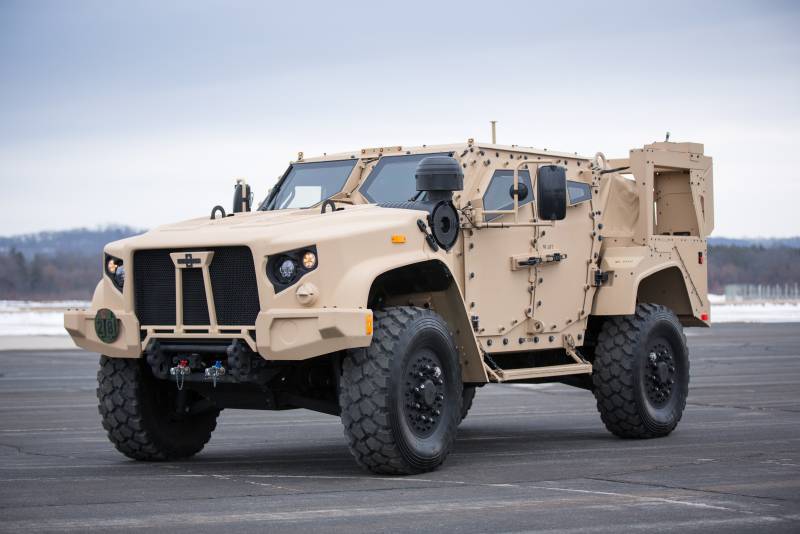
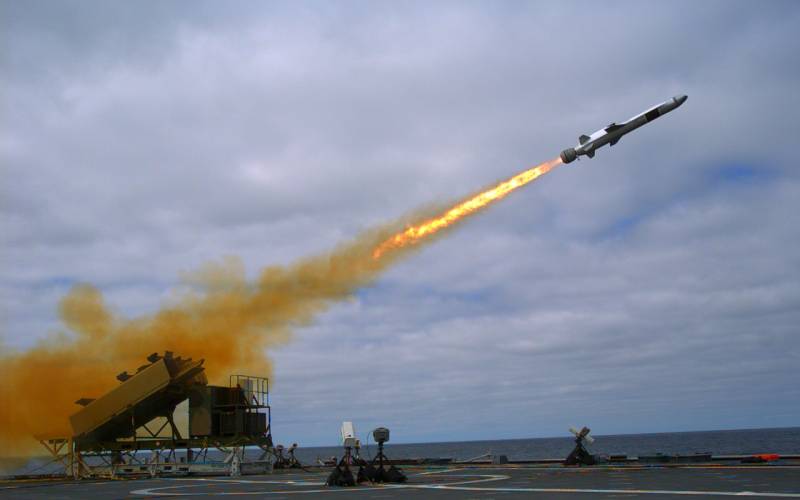
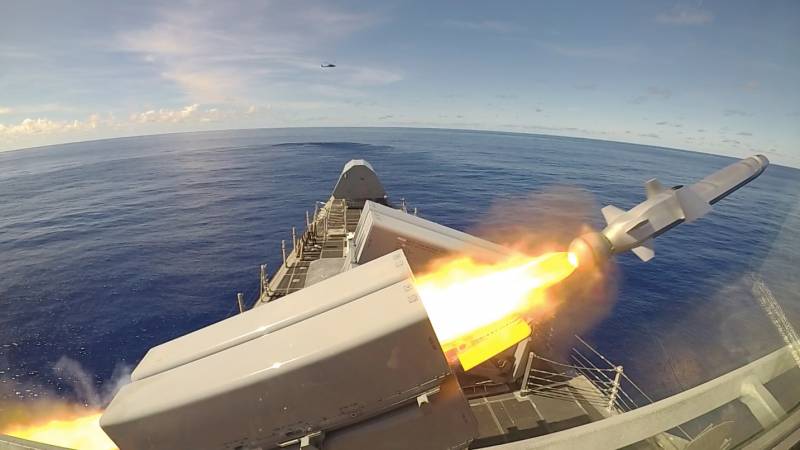
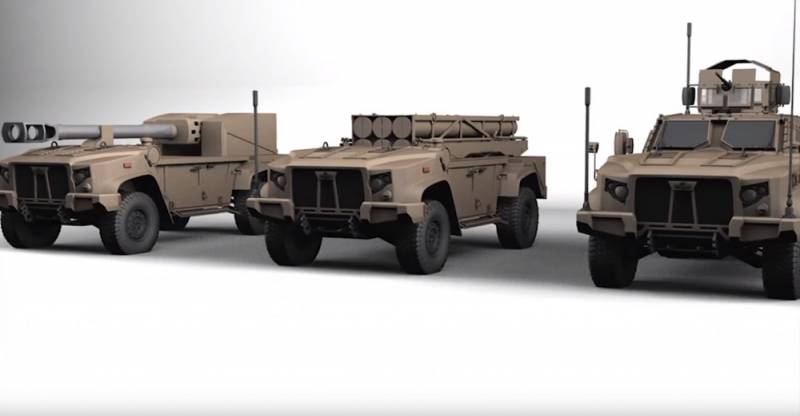
Information